The Blurred Reality of Pit Bulls
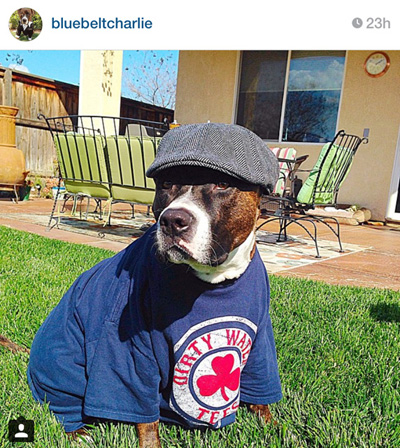
by Natalie
 I am not proud to admit that I bought into the frenzy. I read stories about how pit bulls attacked people and that they were inherently dangerous. I knew they were the types of breeds most often used in dog fighting. If I ever went to the humane society, I never went down the aisles in the far back corner, where it seemed they only held the most vicious of dogs. However, when I thought that pit bulls were vicious, evil dogs, with large powerful jaws that could snap at me any second, I always had a nagging feeling I could never shake away.
I am not proud to admit that I bought into the frenzy. I read stories about how pit bulls attacked people and that they were inherently dangerous. I knew they were the types of breeds most often used in dog fighting. If I ever went to the humane society, I never went down the aisles in the far back corner, where it seemed they only held the most vicious of dogs. However, when I thought that pit bulls were vicious, evil dogs, with large powerful jaws that could snap at me any second, I always had a nagging feeling I could never shake away.
It took years for me to realize it was shame. Here I was, condemning a dog that I had never even interacted with before. I thought that maybe pit bulls were evil dogs that deserved to be banned, but I finally decided that I would form that opinion from my own experiences, instead of what was being thrown at me in the media.
Of course, after I met Elvis and Penny, and multiple other pits from Priceless Pets, I knew that all the talk about pit bulls being dangerous, malicious creatures were completely false. And that’s when I began thinking.
The media’s view of pit bulls as an enemy of America has been going on since the 1980s. I bought into it for many, many years. If I didn’t stop to give them a chance, I probably would still feel that way. And the sad part is, millions of Americans still do. Recently, I’ve taken it upon myself to do some research into why pit bulls were targeted as the villains, who were born strictly to bring harm on any living thing unfortunate to cross their paths.
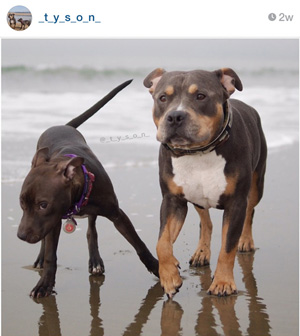 As many pit bull lovers know, these dogs used to be America’s darlings. From Bud, the goggle-wearing pit bull/bulldog mix who hitched a ride on the first road trip across the United States to Petey, the adorable black and white pit bull from The Little Rascals, pit bulls were long considered friends to humans. It should come as no surprise that up until the 1980s, there was only one dog attack incident reported in the papers about a dog that may have been a pit bull. Note that I said may – it was never confirmed exactly what type of dog it was.
As many pit bull lovers know, these dogs used to be America’s darlings. From Bud, the goggle-wearing pit bull/bulldog mix who hitched a ride on the first road trip across the United States to Petey, the adorable black and white pit bull from The Little Rascals, pit bulls were long considered friends to humans. It should come as no surprise that up until the 1980s, there was only one dog attack incident reported in the papers about a dog that may have been a pit bull. Note that I said may – it was never confirmed exactly what type of dog it was.
So, how is it that we almost seem to see pit bull attacks and accounts of pit bull cruelty on a daily basis? There are several factors as to why. First of all, pit bulls rose to popularity in the early 1980s as a popular breed to use in dog fighting. Although not inherently dangerous, they are powerful, as most big breeds are. As crimes were committed and reports were made, the media had a frenzy about this newly popular dog. The media has always had a “love to hate” affair with one dog or another for over a century, and pit bulls were soon dragged into the spotlight. In the past, it had been a variety of dogs, from the Bloodhound and Newfoundland to, more recently, the Doberman pinscher and Rottweiler.
Unfortunately for pit bulls, reporters tossed reasoning, facts and scruples out the window around the time that they realized that sensationalism sells more – which happened to be when dog fighting boomed. I’m sure most people saw the recent article by Charlotte Adler in Time Magazine about “The Problem with Pit Bulls”. In it, she quoted statistics from such sources as Dogsbite.org founder Colleen Lynn and Merritt Clifton, editor of Animals 24-7. These “sources” have been found to be wildly inaccurate and prejudicial.
 They use the now outdated statistics provided by the Center for Disease Control and Prevention (CDC), which was a study published in 2003 on dog attacks. During a 20-year span, that CDC study only looked at breed instead of other factors contributing to a dog attack. Even worse, they only exclusively looked at cases that were reported in the media. They did not look at police reports, autopsy results or confirmed eyewitness accounts. They did not look at all the facts.
They use the now outdated statistics provided by the Center for Disease Control and Prevention (CDC), which was a study published in 2003 on dog attacks. During a 20-year span, that CDC study only looked at breed instead of other factors contributing to a dog attack. Even worse, they only exclusively looked at cases that were reported in the media. They did not look at police reports, autopsy results or confirmed eyewitness accounts. They did not look at all the facts.
The media has a reputation for being unreliable. They want to sell a story, and the more gruesome it is, the better. They don’t care about reading police reports or looking into whether a “family dog” was actually a guard dog chained to a pole for 20 hours a day with no human contact. Facts are smudged, details are hyperbolized and information is “misheard,” all so people can find some comfort behind villainizing and killing a pit bull just because it was born a pit bull.
Another factor contributing to the demonizing of pit bulls is a little something I like to call the “little man complex.” It’s simple really: the bigger and more powerful the dog is, the bigger and more powerful his owner looks. It’s the seedy version of keeping up with the Jones’ (or I guess in today’s world, it would be keeping up with the Kardashians?). As the media makes pit bulls out to be way more aggressive than they are, their popularity goes up within the groups of people who want to find a breed that intimidate others. And what better breed than the one people are already scared of? In other words, the media is encouraging substandard owners to acquire and breed dogs solely to reinforce that image of aggressiveness.
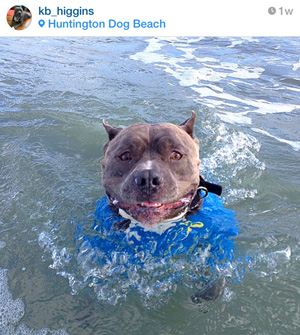 Not just pit bulls, but all dogs are a direct reflection of their owners. If you properly train, socialize and love them, every dog has the potential to be a great family dog. If you do not do those things, then the dogs will become unpredictable, especially since most bad owners want them to be that way in the first place. It’s a dangerous cycle that has been going on for years with a variety of dogs, and only recently has settled on pit bulls.
Not just pit bulls, but all dogs are a direct reflection of their owners. If you properly train, socialize and love them, every dog has the potential to be a great family dog. If you do not do those things, then the dogs will become unpredictable, especially since most bad owners want them to be that way in the first place. It’s a dangerous cycle that has been going on for years with a variety of dogs, and only recently has settled on pit bulls.
Going back to the CDC study and media reports, it’s important to try to understand why the CDC did a study to begin with. Before the pit bulls began entering the spotlight in the 1980s, dog attacks reported seemed to have more investigative integrity behind it. The breed type seemed to be added as a small detail to add to the overall story, while the driving force behind the articles were more interested in what caused the attack.
This correlates nicely with the results of a recently published 10-year study in the Journal of the American Veterinary Medical Association. Unlike the last 30 years, where media thrived off emotions and secondhand accounts, this study looked into what factors really caused dog aggression. They examined the data from 256 dog bite-related fatalities in the U.S. between the years 2000-2009. Here is what they found:
- In 87% of attacks, there was an absence of an able-bodied person to intervene
- 45% of victims were less than 5 years old
- 85% of the victims had only incidental or no familiarity with the dogs
- 84% of the dogs weren’t neutered
- 77% of the victims had compromised ability (age or other conditions) to interact appropriately with dogs
- 76% of the dogs were kept isolated from regular positive human interactions
- 38% of the dog owners had histories of prior mismanagement of dogs
- 21% of the dog owners had a history of abuse or neglect of dogs
- In 81% of the attacks, four or more of the above factors were involved
- 31% of the dog breeds differed from media reports
- 40% of the dog breeds differed from both media and animal control reports
- 20 breeds and 2 known mixed breeds were represented in the attacks
It’s clear that there is more to dog aggression than the breed of dog. The media tiptoes around the problem, applying blame to a severely misrepresented and mistreated dog, but I am not afraid to say what does cause the problem: Americans do not want to accept responsibility for their actions.
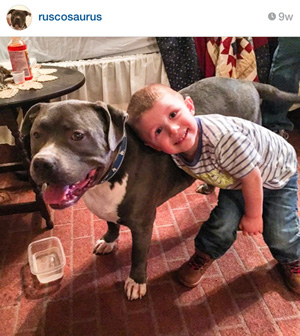 It’s easier for someone to believe that a breed is inherently bad than to step up and say that people are the problem. It means they have to put in the proper time and effort to care for their dog. It means that just a backyard is not adequate exercise and only allowing your dog to be around family is not proper socialization.
It’s easier for someone to believe that a breed is inherently bad than to step up and say that people are the problem. It means they have to put in the proper time and effort to care for their dog. It means that just a backyard is not adequate exercise and only allowing your dog to be around family is not proper socialization.
Unfortunately, people are sold on the idea of the perfect family dog before they even get a chance to know the dog’s individual personality. If it’s not what they expect, the dogs are rightly confused and begin to act out as they are shunned to the side in favor of more amusing or entertaining things. And in our disposable society, once a dog no longer fits a person’s image, they are dropped off at the shelter, along with thousands of others every day.
As soon as people begin taking responsibility for their actions, as soon as they realize a dog is not a toy, as soon as they realize that they shouldn’t believe everything the media reports – then pit bulls can be what they were born to be: dogs.
Sure, a good story is a good story, but when you’re intentionally blurring fact and fiction to advance your own agenda, you are directly responsible for dumbing down America. Let’s put it in perspective: you are three times more likely to be struck by lightning than die from a dog attack (Not even a pit bull attack. Just a dog attack.). And the odds of being struck by lightning? 1 in 4,210,857. Oh, and I hate to break it to you, but you probably won’t contract Ebola or come down with the measles either.
Sources:
The Pit Bull Placebo, By Karen Delise
Journal of the American Veterinary Medical Association, Study: Co-occurrence of potentially preventable factors in 256 dog bite–related fatalities in the United States (2000–2009)
Recommended Posts
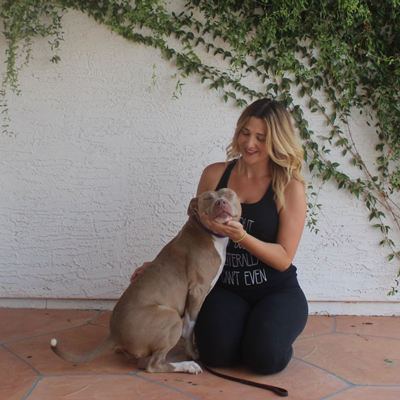
Through No Fault of Their Own Part V
September 12, 2017
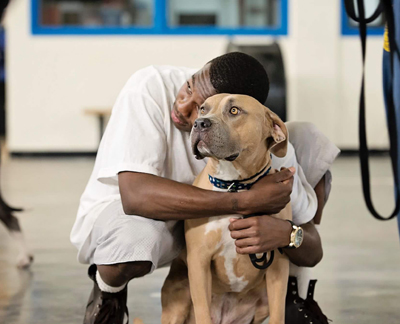
A Letter To The Men of Pawsitive Change at Corcoran State Prison
September 06, 2017

No Fault of Their Own Part IV
August 22, 2017
Comments
Comments are closed.







Loved this and I can relate. I too listened to the media about Pits being vicious and dangerous, until my Daughter rescued one. That was IT!!! This dog is the most lovable dog you could ever want to be around!!!